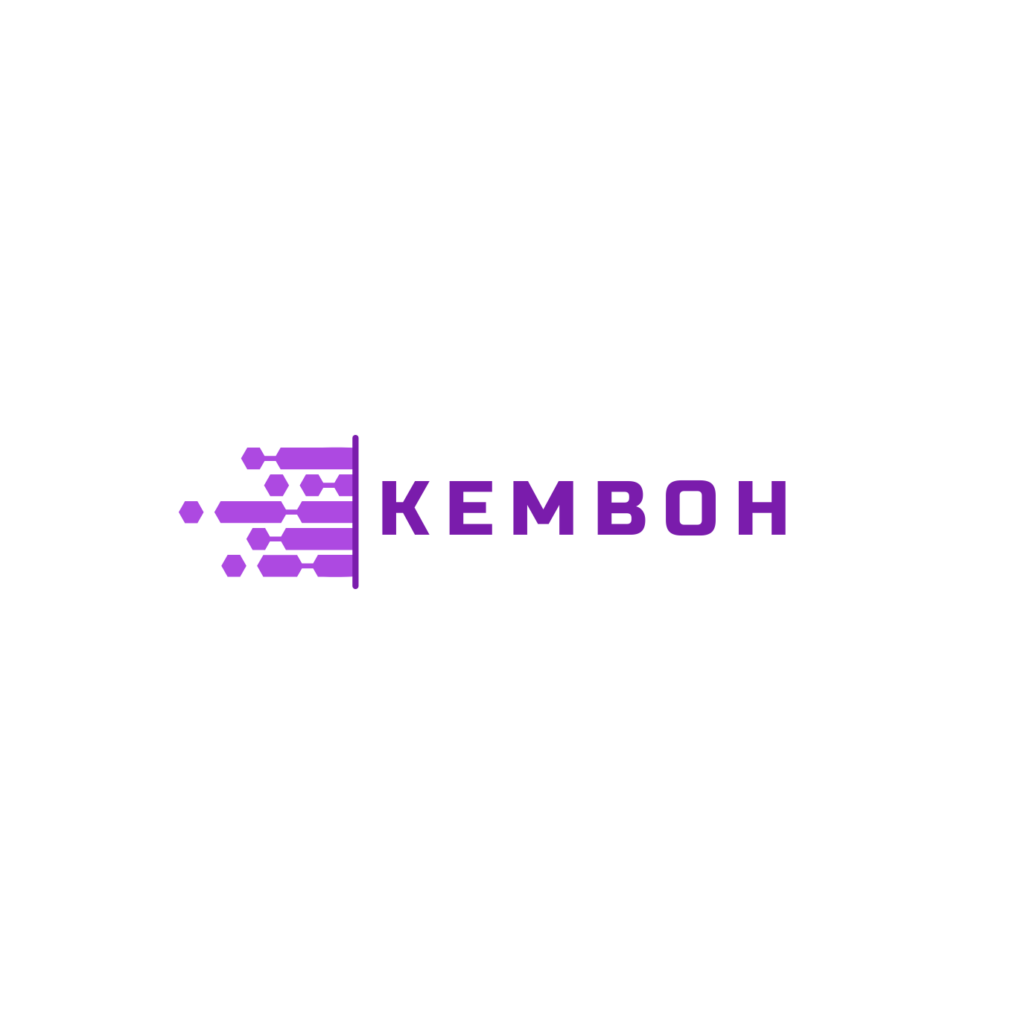Freelancing has become one of the most dynamic career choices in the modern world, and as we step into 2025, its popularity continues to rise. With technological advancements, remote work opportunities, and global connectivity, Freelancing offers unprecedented freedom and potential. Millions of individuals are now choosing freelancing as their preferred way to earn, thanks to its flexibility, independence, and ability to unlock creative potential.
In 2025, Freelancers will be more than just a trend—a lifestyle that empowers people to work on their terms while tapping into a global market. Whether you’re a skilled designer, a passionate writer, a tech-savvy developer, or someone exploring new opportunities, Freelancers Will provide a platform to transform skills into income.
This blog will serve as your complete roadmap to start freelancing in 2025. From understanding the basics to building a successful career, we’ll walk you through every step to help you realize your freelancing aspirations. Let’s dive in!
1. Understanding Freelancing
What is Freelancing?
Freelancing refers to a work arrangement where individuals offer their skills and services to clients on a project-by-project basis rather than being employed by a single organization. Freelancers are self-employed professionals who work independently and are often free to choose their projects, clients, and schedules.
Some common examples of freelancing services include:
- Writing: Content creation, blog writing, technical writing, and copywriting.
- Graphic Design: Logo design, branding, social media graphics, and UI/UX design.
- Coding and Development: Web development, app development, and software programming.
- Other Services: Digital marketing, photography, virtual assistance, and video editing.
Freelancing offers endless possibilities for those leveraging their expertise to solve problems and create client value.
Benefits of Freelancing
Freelancing comes with several advantages that make it an attractive career choice:
- Flexibility and Control Over Your Time
- Freelancers have the freedom to set their own schedules and work hours. You can work from anywhere and balance your personal and professional life effectively.
- Potential for High Income
- Unlike traditional jobs with fixed salaries, Freelancers can scale their income based on the number of projects they take on, their skill level, and the demand for their services.
- Opportunity to Work on Projects You Are Passionate About
- Freelancing allows you to select projects that align with your interests and expertise, ensuring you stay motivated and enjoy your work.
Challenges of Freelancing
While Freelancing offers many benefits, it also comes with its own set of challenges:
- Uncertainty in Income
- Freelancers often face fluctuating income as work availability can vary. Managing finances and preparing for slow periods is essential.
- Managing Multiple Clients
- Juggling multiple clients and projects at the same time can be overwhelming. Effective communication and organization skills are critical for maintaining balance.
- Self-Discipline and Time Management
- Without a boss to oversee your work, staying disciplined and managing your time effectively is entirely up to you. Meeting deadlines and maintaining productivity can be challenging without proper planning.
By understanding the fundamentals of Freelancing, you can better evaluate whether this career path aligns with your goals and prepare yourself to navigate its benefits and challenges effectively.
2. Choosing Your Niche
What is a Freelancing Niche?
A freelancing niche is a specialized area of expertise or skill you focus on as a freelancer. Instead of offering a broad range of services, choosing a niche allows you to become an expert in a specific field, making it easier to attract clients looking for specialized services.
Specializing in a niche is important because:
- It helps you stand out in a competitive market.
- You can charge higher rates as an expert in your chosen field.
- Clients are more likely to trust you for high-quality work when you specialize.
For example, instead of being a general graphic designer, you could specialize in creating logos for startups or designing user interfaces for mobile apps.
How to Select the Right Niche
Choosing the right niche is a crucial step in your freelancing journey. Here’s how to do it effectively:
- Assess Your Skills and Interests
- Identify your strengths, talents, and areas where you already have expertise.
- Consider what you enjoy doing and would be happy to work on in the long term.
- Analyze Market Demand
- Research the current trends and in-demand skills for 2025.
- This year’s popular niches include the development of AI tools, web and app development, content creation for digital platforms, and social media marketing.
- Evaluate Competition
- Look at successful freelancers in your chosen niche.
- Analyze what makes them stand out and consider how you can differentiate yourself.
By aligning your skills and interests with market demand, you can select a profitable and fulfilling niche.
Testing Your Niche
Once you’ve chosen a niche, invalidating it before fully committing is essential. Here’s how:
- Start with Smaller Projects
- Take on small projects or gigs in your chosen niche for hands-on experience.
- Freelancing platforms like Fiverr and Upwork are great places to find entry-level opportunities.
- Gather Feedback
- Seek feedback from clients and peers on your work.
- Use this feedback to identify areas for improvement and confirm if the niche aligns with your strengths.
- Refine Your Approach
- Don’t hesitate to pivot to another area if the niche doesn’t feel right or lacks sufficient demand.
- Experiment with related niches until you find the best one for you.
By choosing the right niche and testing it with real-world projects, you can build a strong foundation for your freelancing career and position yourself as an expert.
3. Building Essential Skills
Technical Skills
To succeed as a freelancer, master the technical skills relevant to your chosen niche. These skills enable you to deliver high-quality work and meet client expectations effectively.
- Tools and Platforms Relevant to Your Niche
- Learn and familiarize yourself with the tools and software commonly used in your field.
- Graphic Design: Canva, Adobe Photoshop, Illustrator.
- Web Development: HTML, CSS, JavaScript, React, WordPress.
- Content Creation: Grammarly, SEO tools, and content management systems.
- Keep updated with emerging tools and technologies to stay competitive.
- Online Resources for Learning
- Take advantage of online platforms that offer affordable or free courses to build your skills:
- Udemy: Offers specialized courses in various fields.
- Coursera: Provides certifications from top universities.
- YouTube: A free resource for tutorials and practical demonstrations.
- Dedicate time to practice regularly and work on sample projects to enhance your expertise.
- Take advantage of online platforms that offer affordable or free courses to build your skills:
Soft Skills
In addition to technical proficiency, soft skills are crucial for freelancing success. They help you build strong client relationships and ensure smooth project execution.
- Communication, Negotiation, and Time Management
- Communication: Convey your ideas and maintain professional correspondence with clients. Active listening is equally important.
- Negotiation: Discuss project scope, pricing, and timelines to ensure mutual agreement.
- Time Management: Plan your tasks, set deadlines, and stick to schedules to maintain efficiency and reliability.
- Importance of Delivering Quality Work on Time
- Consistently delivering high-quality work on time builds trust and credibility with clients.
- Meeting deadlines demonstrates professionalism and increases the likelihood of repeat business or referrals.
By mastering technical and soft skills, you can set yourself apart as a competent and reliable freelancer, ready to take on projects and confidently meet client expectations.
4. Setting Up Your Freelancing Profile
Choosing the Right Platforms
Selecting the right freelancing platform is a critical step in launching your career. These platforms connect you with clients worldwide and provide opportunities to showcase your skills.
- Overview of Freelancing Platforms
- Upwork: Ideal for professionals looking for long-term projects and varied niches.
- Fiverr: Great for showcasing specific services with a gig-based approach.
- Toptal: A platform for top-tier freelancers specializing in high-demand fields like software development and design.
- Tips on Creating Profiles That Stand Out
- Use a professional profile picture that reflects your expertise.
- Write a compelling bio highlighting your skills, experience, and unique selling points.
- Add relevant keywords to improve the platform’s discoverability.
- Include examples of your work or testimonials to build trust with potential clients.
Building a Portfolio
A strong portfolio is a freelancer’s best marketing tool. It demonstrates your capabilities and helps clients evaluate your expertise.
- Why a Portfolio Is Essential
- It provides tangible proof of your skills and the quality of your work.
- It builds credibility and increases the likelihood of clients hiring you.
- Steps to Create an Attractive Portfolio with Minimal Experience
- Start by creating sample projects that showcase your skills. For example, I design mock websites, write articles, or develop demo apps.
- Organize your portfolio into categories to make it easy for clients to navigate.
- Use online tools like Behance, Dribble, or a personal website to display your portfolio professionally.
- Continuously update your portfolio as you gain more experience and complete client projects.
Crafting Winning Proposals
Your proposal is often your first interaction with a client, and crafting it effectively is key to securing projects.
- Tips on Writing Proposals That Get Noticed
- Start with a personalized greeting and mention the client’s name.
- Clearly outline how your skills and experience align with the project requirements.
- Focus on the client’s goals and explain how you can deliver value.
- Keep your proposal concise and to the point, avoiding generic statements.
- Importance of Understanding the Client’s Needs
- Carefully read the job description and ask clarifying questions if needed.
- Address specific pain points or challenges mentioned by the client.
- Please demonstrate that you understand their expectations and are committed to delivering results.
By setting up an impressive freelancing profile, building a compelling portfolio, and writing tailored proposals, you can significantly increase your chances of landing projects and building a successful freelancing career.
5. Finding Your First Client
Networking
Networking is a powerful way to connect with potential clients and establish yourself in the freelancing community.
- Leveraging LinkedIn and Social Media
- LinkedIn:
- Create a professional profile showcasing your skills, portfolio, and freelancing niche.
- Engage with relevant posts, share your insights, and connect with industry professionals.
- Use LinkedIn’s job search feature to find freelancing opportunities.
- Social Media:
- Use platforms like Twitter, Instagram, and Facebook to promote your services.
- Join groups or pages related to your niche to interact with potential clients and share your work.
- Use relevant hashtags to increase visibility and reach a wider audience.
- Joining Relevant Communities and Forums
- Participate in online communities such as Reddit, Quora, or niche-specific forums.
- Provide helpful answers or advice to establish your expertise.
- Mention your services subtly when appropriate to attract interest from potential clients.
Using Freelancing Platforms
Freelancing platforms are ideal for beginners to find clients and gain experience.
- Tips for Bidding on Projects as a Beginner
- Start with smaller, less competitive projects to build your profile and reviews.
- Write personalized and well-thought-out proposals tailored to each client’s needs.
- Highlight any relevant skills or sample projects, even if you have minimal experience.
- Be flexible with your rates initially to attract clients, but ensure fair compensation.
- Importance of Patience and Persistence
- Landing your first client may take time, but persistence pays off.
- Stay consistent in applying for projects and improving your skills.
- Use client feedback to refine your approach and enhance your proposals.
By combining networking efforts with freelancing platform strategies, you can increase your chances of finding your first client and kickstarting your freelancing career.
6. Managing and Growing Your Freelancing Career
Setting Rates and Negotiating
Determining your rates and mastering the art of negotiation is essential for financial success in Freelancing.
- How to Determine Your Worth and Set Competitive Rates
- Assess your skills, experience, and market demand—research industry standards for your niche.
- Consider factors like project complexity, expected time investment, and client budget.
- To attract clients, start with slightly lower rates as a beginner, but gradually increase as you gain experience and positive reviews.
- Tips for Effective Negotiation
- Be confident and communicate the value you bring to the project.
- Always present a range for your rates, allowing room for negotiation.
- Listen to the client’s budget constraints and find a middle ground for both parties.
- Include non-monetary benefits like faster delivery or additional services if you cannot meet the client’s budget.
Managing Projects and Clients
Practical project and client management ensure smooth operations and build long-term relationships.
- Tools for Project Management
- Trello: A visual project management tool for organizing tasks.
- Notion: A comprehensive task-tracking, note-taking, and client communication platform.
- Google Workspace: For shared calendars, document collaboration, and communication.
- Maintaining Good Client Relationships for Repeat Work
- Communicate regularly and provide updates on project progress.
- Be responsive to feedback and willing to make adjustments as needed.
- Deliver quality work on time and exceed client expectations whenever possible.
- Follow up with past clients and offer exclusive discounts or services to encourage repeat business.
Scaling Your Freelancing Career
As your freelancing career grows, exploring ways to scale your income and operations is essential.
- Expanding Your Skill Set and Services
- Continuously learn new tools and skills that complement your niche to attract higher-paying clients.
- Offer package deals or add-on services to increase your income per client.
- Outsourcing and Forming a Team
- Delegate repetitive or time-consuming tasks to other freelancers or assistants.
- Build a reliable team to handle multiple projects simultaneously, allowing you to focus on more significant opportunities.
- Creating Passive Income Streams Through Digital Products
- Develop and sell e-books, templates, or online courses related to your expertise.
- Create premium resources or tools that other freelancers or clients can purchase.
- Use platforms like Gumroad, Teachable, or Etsy to distribute your digital products.
By mastering rate-setting, improving client relationships, and scaling strategically, you can transition from a beginner to a thriving freelancer, achieving financial stability and career growth.
7. Staying Updated with Trends
The freelancing landscape evolves rapidly, and staying informed about the latest trends is essential for long-term success. Adapting to these changes helps you remain competitive and ensures your skills and services align with market demands.
Importance of Adapting to Industry Changes
- Remaining Relevant:
- Clients prefer freelancers who stay up-to-date with industry standards and innovations.
- Adapting to new tools, technologies, and methods keeps your services in demand.
- Expanding Opportunities:
- New trends often open up fresh opportunities for freelancers to explore.
- You can position yourself as a leader in emerging areas by embracing change.
- Future-Proofing Your Career:
- As industries evolve, outdated skills may become less valuable.
- Continuously learning ensures your career thrives despite market shifts.
2025 Trends in Freelancing
- AI and Automation:
- Artificial intelligence tools like ChatGPT, Canva AI, and coding assistants are reshaping how freelancers work.
- Freelancers skilled in AI implementation, automation, and AI-generated content will be in high demand.
- Learning to integrate AI into your workflow can save time and enhance the quality of your services.
- Niche Markets:
- Clients increasingly seek specialists rather than generalists.
- Niches like sustainable design, mental health content, and blockchain technology are gaining popularity.
- Specializing in a niche allows you to charge premium rates and attract specific clients.
- Remote Collaboration Tools:
- The rise of advanced collaboration tools like Slack, Notion, and Miro is making remote work more efficient.
- Familiarity with these tools will be crucial for freelancers working on team-based projects.
- Personal Branding:
- With the growing competition, personal branding is becoming essential for freelancers.
- Building a strong online presence and showcasing your expertise will help you stand out.
By keeping an eye on these trends and adapting accordingly, you can maintain your relevance in the freelancing industry and thrive in the ever-changing digital economy of 2025.
8. Tips for Staying Motivated
Freelancing is a rewarding career but comes with challenges such as setbacks, rejections, and the need for consistent effort. Staying motivated is essential to overcome obstacles and achieve long-term success.
How to Handle Setbacks and Rejection
- Shift Your Perspective:
- Treat setbacks as opportunities to learn and improve your skills.
- Remember that rejection is a natural part of Freelancing, not a reflection of your worth.
- Seek Feedback:
- When clients reject proposals, ask for constructive feedback to understand their concerns.
- Use this feedback to refine your approach and enhance future proposals.
- Stay Resilient:
- Remind yourself of your long-term goals and why you chose freelancing.
- Take breaks when necessary to recharge and come back stronger.
Importance of Celebrating Small Wins
- Boosting Morale:
- Acknowledge and celebrate small achievements, such as completing a project or landing a new client.
- Celebrating successes builds confidence and reinforces positive behaviour.
- Maintaining Momentum:
- Small wins create a sense of progress, motivating you to keep moving forward.
- Use milestones as stepping stones to larger goals.
- Reward Yourself:
- Treat yourself to something you enjoy after achieving a goal to stay inspired and energized.
Setting Realistic Goals and Tracking Your Progress
- Define Clear Objectives:
- Break down your larger goals into manageable tasks. For example, aim to complete three projects in your first month.
- Set specific, measurable, achievable, relevant, and time-bound (SMART) goals.
- Track Your Progress:
- Use tools like Notion, Trello, or a simple journal to monitor your daily and weekly achievements.
- Regularly review your progress to identify areas of improvement and adjust your strategies.
- Stay Flexible:
- Understand that goals may need adjustment based on unexpected circumstances.
- Adapt your approach with sight of your ultimate objectives.
By learning to handle setbacks, celebrating your progress, and setting achievable goals, you can maintain a positive mindset and stay motivated throughout your freelancing journey. Success is a marathon, not a sprint—consistent effort and resilience will lead you to your desired outcomes.
Conclusion
Freelancing in 2025 offers endless possibilities for those willing to leap. By following this comprehensive roadmap, you can build a solid foundation for a successful freelancing career. Let’s recap the key steps:
- Understand Freelancing, its benefits, and its challenges.
- Choose the right niche that aligns with your skills, interests, and market demand.
- Build essential technical and soft skills to deliver high-quality work.
- Set up an impressive freelancing profile, craft compelling proposals, and create a portfolio to showcase your expertise.
- Find your first client through Networking and freelancing platforms.
- Manage and grow your freelancing career by setting competitive rates, maintaining strong client relationships, and scaling strategically.
- Stay updated with industry trends and adapt to changes in the freelancing landscape.
- Stay motivated by handling setbacks, celebrating small wins, and setting realistic goals.
Now is the perfect time to start your freelancing journey. The first step might feel daunting, but every great career begins with a single move forward. Consistency and resilience are your greatest assets as you navigate this exciting path.
If you found this roadmap helpful, share it with friends or fellow aspiring freelancers who might benefit from it. Got questions or need more tips? Feel free to connect with me—I’m here to help you succeed in your freelancing journey!









